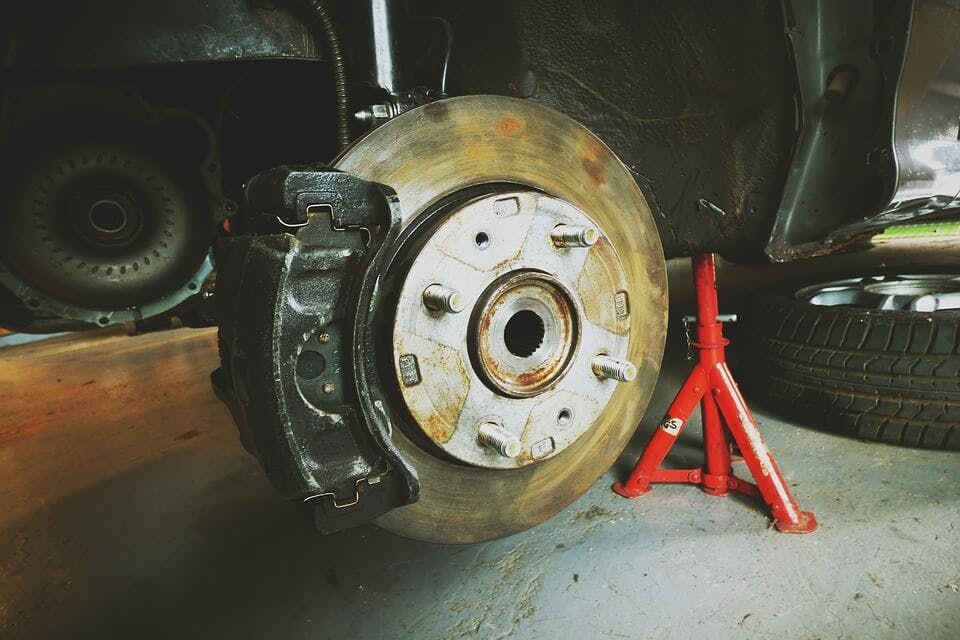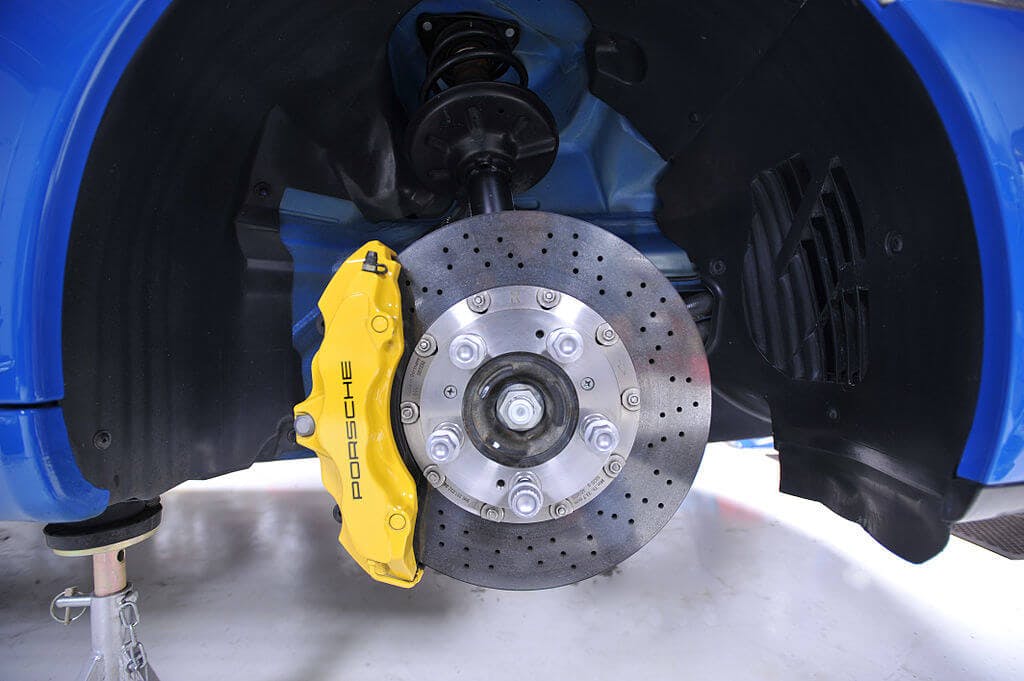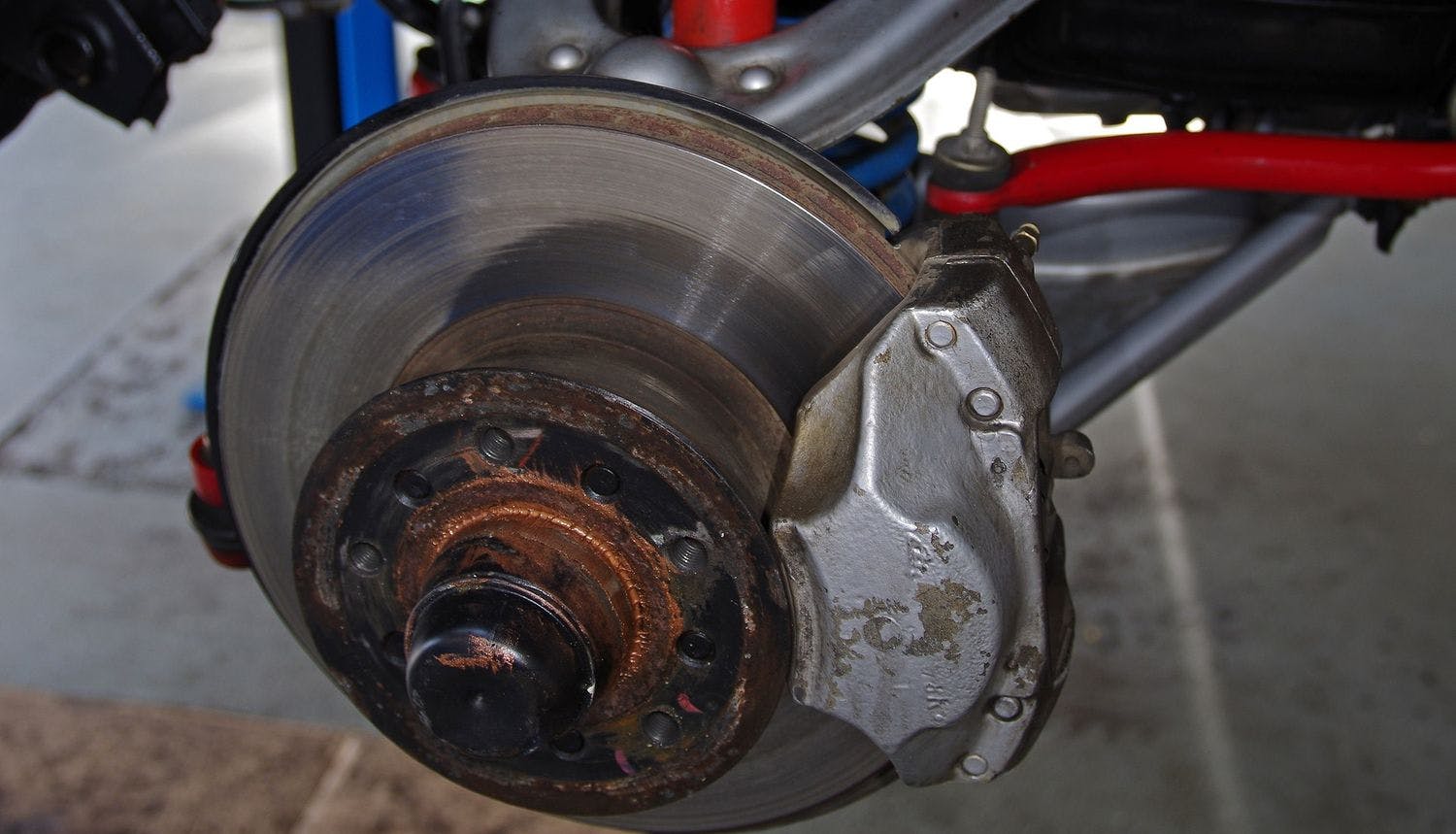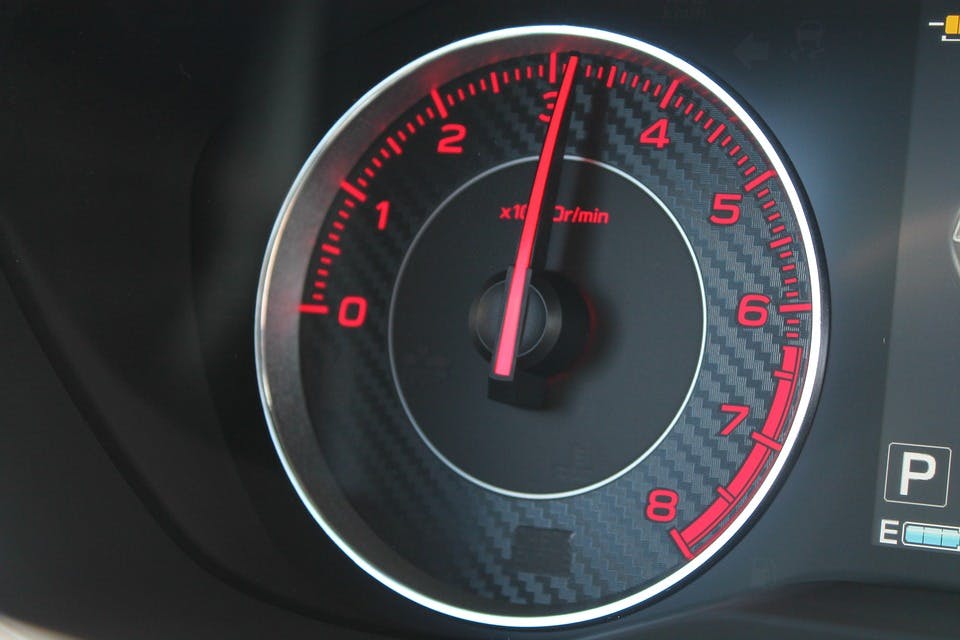Braking System Malfunctions: How do they manifest?

In today's article, we will examine how various braking system malfunctions manifest themselves and how they can be eliminated. The braking system is the most important part of the car in terms of safety.
This system has a decisive impact on driving safety, as it serves to stop, slow down the car, or secure it while the car is parked.
Spis treści
- Introduction
- 1. Steering wheel shaking, wobbling, or vibrating
- 2. Car pulls to one side during braking
- 3. Hard brake pedal
- 4. Brake pedal resistance
- 5. The humming of the brakes after a long stop or washing the car
- How to extend the lifespan of your brakes
- Our reader's summary of braking system malfunctions
Introduction
Since the braking system is so important, every experienced or inexperienced driver should be able to recognize at least symptoms that warn of a braking system malfunction. Thanks to the timely identification of the problem, it is possible to eliminate various braking system malfunctions before it is too late.

Car Braking System: How does it work?
At the same time, solving the problem in time can prevent more damage to the braking system. Suppose a dangerous situation on the road occurs. In that case, the onset of the braking effect, its force, and the car's braking distance are often decisive factors that affect the possibility of a collision and the force of the impact in the event of a collision.

The braking system's good condition can save you in many situations. You should thus not forget about its regular maintenance, checking the condition of its components, and troubleshooting if needed.
Let's take a look at how specific braking system malfunctions manifest themselves and how they can be eliminated.
1. Steering wheel shaking, wobbling, or vibrating
The vibration of the brakes causes the shaking, wobbling, or vibrating steering wheel during braking. It is often caused by the different widths of the disc along the length of its circumference or by various deformations caused by overheating of the brakes.

Brake Pads: How do they work, and which are the best?
The brakes, therefore, vibrate when the brake pads come into contact with the disc, and these vibrations are then transmitted to the car steering.
However, excessively worn or damaged brake discs can also cause the steering wheel to shake. However, the problem with worn or damaged brake pads also manifests in increased brake noise (squealing metal sound).
The solution to the problem:
The solution to this problem is straightforward. You just need to replace the discs and the brake pads. If you were to change only the discs due to unevenly worn brake pads, the disc could rub incorrectly, which would reduce the braking effect.
2. Car pulls to one side during braking
If the car pulls to one side (left or right) during braking, the disc or brake pads are dirty with oil or another lubricant on one side and have lost their braking efficiency.
A stuck brake caliper can cause this problem in addition to dirty brake pads. In such a case, the same braking effect as on the opposite side of the axle is not ensured, or the braking effect on this side is greater, which causes the just-mentioned pulling of the car to the side.
The solution to the problem:

Eliminating this problem requires cleaning the brake pads and disc (e.g., with technical gasoline) or possibly replacing these components on both sides of the axle.

Disc brakes: What are their pros and cons?
In the case of a jamming caliper, it is necessary to check the operation of the piston in the caliper and subsequently eliminate this problem by repairing or replacing the piston or the entire caliper.
3. Hard brake pedal
A malfunctioning brake booster is one of the most common reasons for a hard brake pedal. Thanks to the brake booster, the brakes are more sensitive. Thus, it is easier to apply the brake force. So if the brake booster is not working properly, the brake pedal becomes harder.
However, in addition to a problem with the brake booster, a hard brake pedal can also be caused by a stuck caliper or brake pressure regulator.
The solution to the problem:
Inspection of the surface of the brake pads and their possible replacement
Repair or replacement of the caliper
Replacement or repair of the brake booster
Replacement of the brake pressure regulator
Replacement of the vacuum pipe leading from the brake booster
4. Brake pedal resistance
If this problem occurs, it is necessary to exert more force to press the brake pedal. At the same time, the brake pedal behaves as if it were pushed back. This problem may have several causes, such as:
The brake fluid is in bad condition
Leaking hoses of the braking system (braking system is aerated)
Brake shoes incorrectly fused in the case of drum brakes
Stuck brake pressure regulator
The solution to the problem:
Bracing the brake shoes of the drum brake
Checking the condition of the brake fluid (if necessary, replacing it)
Checking the tightness of the main brake roller and the brake rollers of the individual wheels
Bleeding the brakes
Checking and, if necessary, replacing the brake hoses.
5. The humming of the brakes after a long stop or washing the car
If you do not use your car for a long time or have washed it and left it standing, a humming sound may be heard after driving and pressing the brake pedal for the first time, caused by the abrasion of the brake disc from corrosion.
This characteristic sound is just how corrosion is removed from the discs during the friction that occurs during braking. Corrosion occurs on discs and brake pads due to the effect of moisture and road salt, but also when washing your car.
The solution to the problem:
Corrosion can usually be removed from brake discs and pads after applying the brakes several times. However, if the corrosion is extensive, it is necessary to replace these components.
How to extend the lifespan of your brakes:
Proper application of brakes
Anticipating and maintaining a distance
1. Correct brake break-in
After replacing the brake pads and discs, the contact between these components is imperfect. The perfect seating of the plates on the discs occurs only after driving approximately 200 km (or 125 miles).
Until then, you should avoid sudden or intensive braking, for example, when driving downhill.
2. Anticipating and maintaining distance
Thanks to anticipating and maintaining the correct distance from other cars, you will be able to reduce the speed of the car in time and thus avoid sudden braking.
3. Engine braking

Engine braking - How does it work, and is it harmful?
You don't have to use only the brakes to reduce the speed. The speed of your car can also be easily reduced by downshifting to a lower gear, considering your car is equipped with manual transmission.
Our reader's summary of braking system malfunctions
I will add a few observations from my experience. Steering wheel shaking can also come from the half-axis, and if the half-axis imbalance is not too great, it will only shake when braking, but in case of such symptoms, check the brakes as well. Metal screeching from the brakes indicates wear, high-frequency screeching is usually just dust in the brakes, whether from worn material or off-road driving, then it's a good idea to first wash the entire caliper well from the inside with a sponge, it often helps. If pulling to the side is caused by a roller in the caliper (floating caliper), the brakes usually overheat, and it can be dangerous, so it's good to solve it fast.